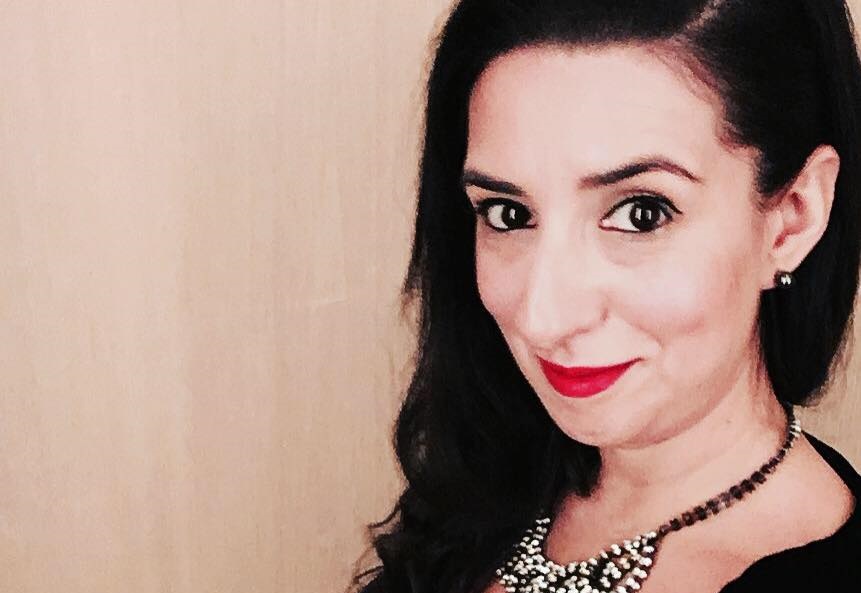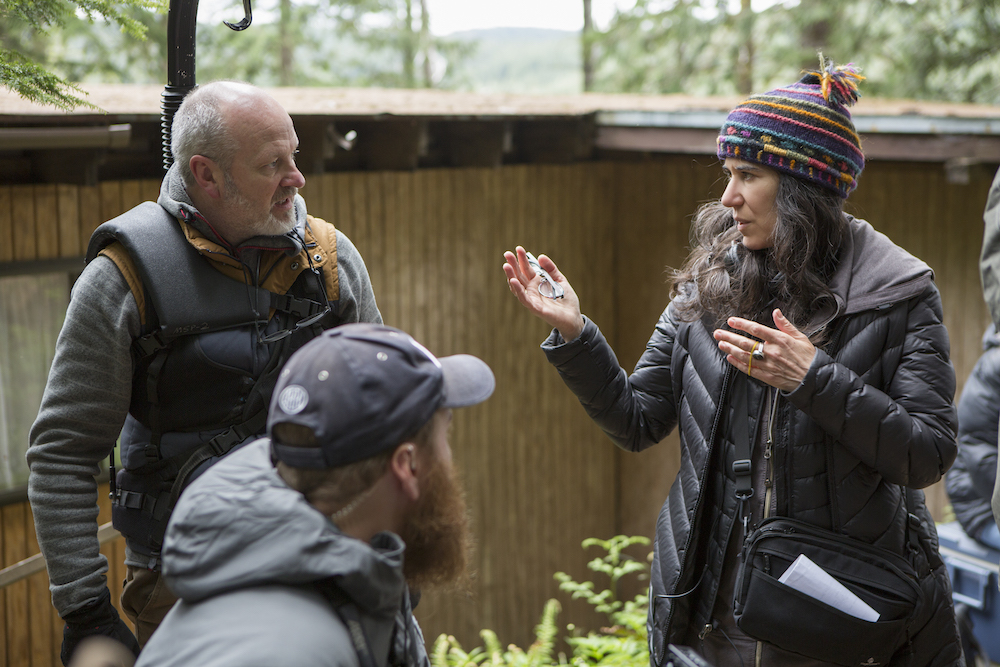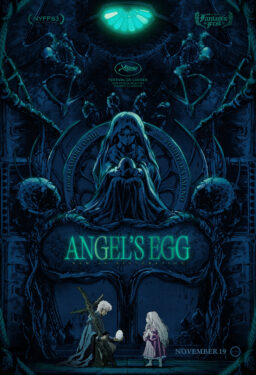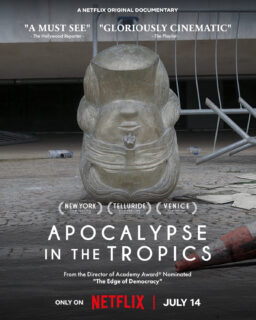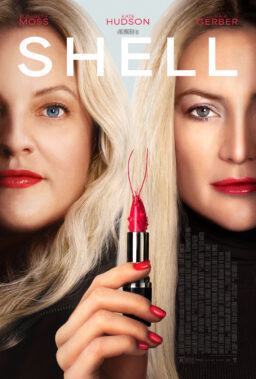“I always think that my assignment is to seek out stories that are experienced by people who don’t get the ticket for Easy Street.”
This is what writer/director Debra Granik tells me one afternoon in New York, when we settle down to talk about “Leave No Trace”—a quietly aching, lyrical film that tells the story of a father and his young teenage daughter, living off-the-grid away from the eyes and ears of the authorities. Granik’s articulated artistic focus on insular people living on the fringes of society won’t come as a surprise to anyone who’s seen her previous films like “Down to the Bone” and the Oscar-nominated Ozark tale, “Winter’s Bone,” which famously introduced Jennifer Lawrence to the world. The filmmaker expressly isn’t interested in stories that revolve around characters that have everything or are out to seek wealth. “I am interested in the lives of everyday, ordinary Americans,” she explains. “The struggle to have a living wage doesn’t come easy. You’re ready to work, you want it, you seek it … but it’s not like it’s just given to you. For whole swaths of people, that map of ‘come along this way, come to college, do this and that,’ isn’t offered. It’s a big country, you know?”
“Leave No Trace” is picturesquely set amid the bright and wet landscapes of the Pacific Northwest. The aforementioned father and daughter, Will and Tom (played by Ben Foster and the terrific newcomer Thomasin Harcourt McKenzie, respectively), are based on a real-life family that was first discovered by author Peter Rock in a brief newspaper article. Rock then turned their account into his novel, My Abandonment, filling in many of the blanks the way he imagined them. Then the book came Granik’s way, and she and her co-writer Anne Rosellini further massaged it for screen, imagining their own version of the true story. “There were two producers that had optioned the book, which was published by 2004,” Granik recalls. “And they held it for a while looking for someone to direct. It was a good time for both of us. [My creative screenwriting partner] Anne Rosellini and I read the book and really responded. You play the whole book in your mind’s movie screen first: tall trees, moss that was described … It felt like it was going to be very photogenic and that there would be a lot of texture with reflective surfaces. It was all going to be things that the camera will love.”
A seemingly small film with a big scope, “Leave No Trace” poses deep questions about the veteran experience in America, societal conformism and even responsible parenting. While the individual experiences of two voluntary outcasts trying to survive on their own terms clash with a system not exactly designed to tolerate them, they come at odds with one another, too. A veteran struggling with PTSD, Will tries to do his best as a father despite his personal psychological troubles, and raises Tom not only with practical knowledge, but also through a firm sense of moral code. Meanwhile, Tom finds herself at a guilt-ridden crossroads: on one hand, she wants to be with and support her father. On the other, she craves the simple but safe comforts of a settled-existence.
Granik calls the daily perils of the unconventional lifestyle, adopted by Will and Tom, “alternative stakes.” “I want to be part of a movement that helps re-establish that stakes can be more diverse,” she reflects.
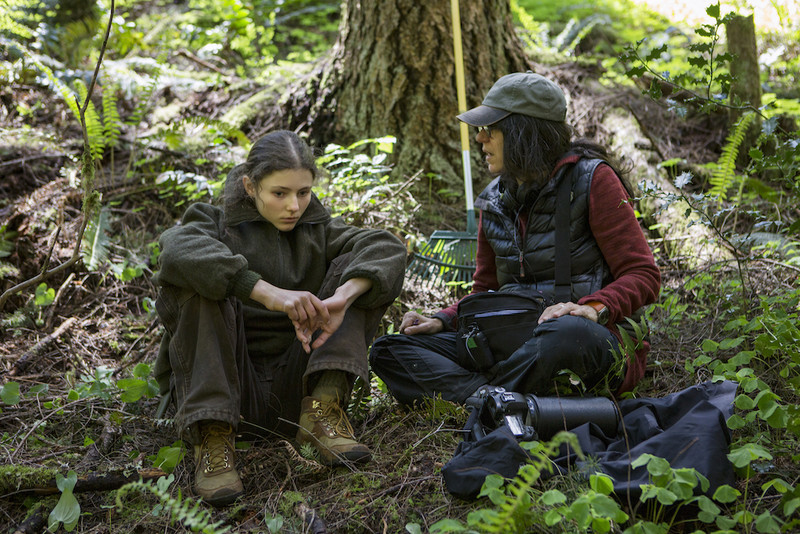
I know you’ve made a documentary, “Stray Dog,” since “Winter’s Bone,” but still, it’s been eight years since your last narrative feature. What took so long? We really missed you.
Thank you. Right after “Winter's Bone,” I had a feature project that I was very interested in and I did a lot of research for it. (Not “Stray Dog”; another film that I’m finishing now.) The narrative script was about a person’s journey after incarceration—they tried to live in a way that keeps them out of jail. But things happen that they get caught up in the same life style and go back to jail. I want to ask, “When does someone not go back to jail?” We know that story; we know how people get caught back up in the criminal justice system, but what we don’t know is how people get out, and stay out.
It turned out; it was better suited for documentary. Narrative can tell a sort of more streamlined, cogent story. But “cogent” doesn’t allow for all the ands. [There are] a lot of ways that people feel very frustrated with that process and they stick it out. And they withstand setbacks. Who knows how they keep their faith, but they do make it over to the other side. The time that it takes to make the feature is really contingent on the feature being sort of almost ready-made—so coming to a book is more ready-made. You at least have the story that someone sorted out.
One of the things I really love about “Leave No Trace” is the way you handle the stakes the father and daughter are up against. I saw this as a pretty high-stakes survival story about people who could even die. While you opt-in for a consistently peaceful, serene feeling visually, the stakes are always there.
Well I love that you can process and even assign that. I share your feeling—stakes don’t have to be the barrel of a gun pressed against someone’s head. Stakes don’t have to be the threat of being harmed by the violence of another person. You’re right. Stakes are, how do you keep your body temperature from reaching a dangerous place if you’ve gotten wet, or where are you going to go? If your life was working and you were trying to be undetected by society, and then they say, “We need you to come back, you need to be able to come back in,” and you feel as though you can’t. That’s high-stakes; especially if you’ve got someone else that you’re responsible for. So I do really love other people’s stories that have those (I don’t know what we want to call them) alternative stakes. It’s not the threat of a high jinx crime or someone going into the inner sanctums of the banking system.
It’s something more primal.
Yeah. As we’ve pyramid-ized so many things; the algorithm has forced us into a really thin line. I think we used to have a big pie of what stakes could be. Social realism was always about the stakes of everyday life. In many countries, the issues around the end of agrarian life and tradition [exist]. [As in,] what does it mean to send people from a village to their first corporate jobs? What does it mean to go from a non-mechanized everyday life to a very mechanized one? Those are diverse stakes. But our appetite got reduced. We’re like gladiator culture now; we like one stake. We’ve gone full circle and I think we probably do it every hundred years or something. It’s so tiring.

Perhaps there is an element of escapism in the stakes we choose to care about in big budget entertainment now. But then I see a film like yours and I feel you’re grounding us back to our core.
It’s true—rent is a stake, right? At the end of every month, there’s a huge amount of people that need to worry about whether they’ve got enough money to stretch to get what they need. Losing your job, whether it’s a working class job or a high finance job, those are big stakes. So whether Spider-Man loses the rope [or not] … I agree, I think that’s an easier stake to comprehend. Is he going to get there or not? Is he really falling or will he be able to stop his fall on the balcony on floor 80? It is true, we want the stakes to be so far away. Probably at the end of the month, people want the stakes to be really about whether he is going to be able to jump on a moving train or not.
How did you dip your toes into that region in the Pacific Northwest, get to know the communities and then marry your experience with what was already in the book?
Research is always the extremely fun part because you’re not filming yet. I mean that really passionately. You’re allowed to explore, take a lot of pictures, meet people, and ask questions. You’re not looking at your clock and trying to figure out, “Are we going to make the day?” You find different routes. Someone says, “Oh yeah, just five minutes from here is the town where the teenagers have a Bunny Club.” Veterans who are willing to speak to you might look at your script and be able to say, “I really think it might go more like this,” or, “This is something that I remember someone saying to me.”
It’s funny, the author [of the book] and I took a similar approach. The things that were itemized or described with some precision in this very brief article that appeared in the paper (when the-real life family was discovered), didn’t give much. And so [the author] used every bit of that in his book and I then stayed very close to what he did in the first third of his book. He imagined what happened to them, and I imagined what happened to them slightly differently. I spoke to him and I said, (because in the book we deviate dramatically—in the book the father dies in a very grizzly way), “I’m wondering what would happen if the father lives after he’s injured,” And he said, “You should follow that thought, because this version is just my version. If it’s not completely making sense in your head, you should at least run the story like that once, do a draft where he lives and see what happens.” And I did that. Anne and I thought it was a very strong way to look at their decision to part. It wasn’t because he died. They have to make that decision.
I love that you took that direction. The greatest sign of love to me is being brave enough to allow your loved one their freedom.
It’s very hard, yes. It’s like taking a bullet sometimes.
And Thomasin Harcourt McKenzie, in the role of that young person craving her own path, is phenomenal. There’s something really raw and unadulterated about her. How did you find her?
Thom is from New Zealand, born and raised there. And she taped her own audition and sent it to the casting directors we were working with. Initially I said, “It’s out of the question, she’s from New Zealand. It’s a low budget film, we can’t even bring her here.” But the more we kept casting, the more her audition stuck. I kept going back to it. We met and we said, “Can we call her at least?” So we had several Skype calls, and I loved what she had to say about the book and the screenplay. She had a lot of rich thoughts. And she seemed like she hadn’t been in the fray of New York and LA yet. And so she did seem un-jaded; not very urban. She’s filming two things now. So she is already [busy]; her schedule is booking up really quickly.

Did you have Ben Foster in mind as the father, as you were writing it? He has a certain presence and look; really quiet, but with a lot brewing underneath.
I left that really open. I was really concentrating on the information I was getting from inspirational sources to kind of understand that character. As we started to get serious about someone who could fill those shoes, I was very impressed with what Ben had done; specifically related to sensitive research and portrayals of veterans, of people who had been involved in combat. And I liked his work very much in Oren Moverman’s film, “The Messenger.” I felt that Ben would bring a complexity. But then I thought this is also a really fresh, new kind of role for him. So the discussions were very positive with him. I realized that he had a great interest in the material, in non-conforming lifestyles. He was interested in what it would be like to opt-out a little bit from the digital era.
I can definitely see that about him.
Yeah. Ben was about to be a father, his first. And so I think he was very open to Thom leading the way on that part. They had a lot of tasks to do, which was really helpful. They had to really pass each other, do things with each other, like make fire work. She really had to get those things prepared, feather the sticks. And their food and their sustenance really rely on them being a team. So they did this very immersive rehearsal together for two days, with a primitive skills instructor.
And they both really admired her. She was extremely excellent at what she does. And they got their first knives and learned how to use them really well. The skills teacher taught them about five or six things she carefully selected that they could do in a shorter time, and then perform on screen. And I think that brought them together in a really great way. They critiqued each other and they were very aware of how they were doing.
There are moments between them that anchor their relationship in believable and relatable truths. One happens early on in the movie—she finds this little charm or piece of jewelry and he says, “Okay, if it’s still here when we get back, you can take it. That’s fair.”
That incident, or that little moment, was described in the book. But I did really like it because I thought it was very true to a teen person who would know that park very well. And I did like that in Peter’s book, the father definitely has systems and wants to make a systematic way of living. He wants to have rules, he wants to have ethics, and he wants to feel that he is doing right by his daughter. It’s maybe an old-school way of teen parenting. But of course, she’s not a saint, she has mischief is in her. And I wanted to be able to show that. In that moment, it gave us the opportunity to be able to show all those things.

My other favorite scene is the one with the bees and beehive handler. Being that intimate with something that can but doesn’t want to harm you felt very in synch with the themes of the film, both poetically and philosophically.
The beekeeper is a very passionate beekeeper. There are many of them. That’s another thing that is like, the devotional dancers, or like people that run these agricultural clubs. Beekeeping is one of these things that you find in every state, every place. And this was the Pacific North-west version—there is something very spiritual about it. In real life, she was playing herself. And when we were rehearsing, she said to me that she thought Thom could handle the bees. She thought, many people can’t. You have to be very calm to hold them because they need to feel safe; they can’t feel like you’re going to crush them. The only time they would ever sting, as she says, is when they feel that you’re going to kill them. So they sting in self-defense.
So I said, “Thom, how do you feel?” And she said, “I want to do it.” And then I said, “Well, I’ve got to call your parents. Because there are a lot of insurance issues, the production can’t let you do it.” It would have to be something that you want to do and that your parents consent to. And she really liked Susan, the beekeeper. She went a couple of times to Susan’s own home, where she keeps her own hives. And they practiced and they looked at it and Susan explained to her how to proceed. So it wasn’t any kind of complicated stunt.
In a lot of ways, “Leave No Trace” is a pretty political film, maybe quietly so. You deal with issues around veterans, the hardships or everyday Americans, the living-off-the-grid and from-the-land attitude, and so on.
Most stories will actually have some kind of political resonance. And then even if we don’t plan on it, we’ll bring that to [the table], right? We’ll bring assumptions about someone’s race or their ethnicity on screen. I like to create stories where I’m not foreclosing the option to consider in an open-minded way. One of my jobs as a storyteller, in the way that I self-describe my job, is to engender some kind of consideration or empathy; to ask some questions that at least make you motivated to want to understand another person. Something about what they’ve lived through, what they think about.
So I was trying to make sure that we’re surrounding [Will] with a few questions from a brochure, from a psychiatric test [about PTSD]. Things that made us wonder about him, and of course by extension, what might have happened to him; what might befall him. And similarly for his daughter, when the social workers are asking her certain things, it gives us a chance to ask not just what we would want for the characters. It’s an interesting, complex process.
There is now an improved sense of support in the industry for female driven stories and female filmmakers. I’m wondering if, when you compare your experience as a director since “Winter’s Bone” to today, you feel a sense of renewed hope that things might get easier for women.
Oh, I do. I do feel very optimistic. I think that we’re now seeing the statistical [evidences]. In the ‘90s when many film schools decided to have parity, the film class would have 50% women, 50% men. Now a couple of decades later, we’ve started to see that that made a difference. The amount of women that are permitted to be in the academic setting, or the training program, then are going to come out and start performing their art, or executing their skills. You know you plant the tree, and many years later, the tree is standing and up there and ready to be in the forest.
So I think that that alone is one element. And the other: all the cultural shifts that have to happen. Culture just gets so stale. “Time’s Up” is a really great phrase. To vote we had to say, “Time’s up”. People of color have to say, “Time’s up” [to] this country’s hideous legacy. Time’s up on a lot of practices that perpetuate these legacies. What I hope you hold the torch for just as a journalist and as a writer and thinker (I want to just give you this really positive feedback); I think you’re on to something that I’ve not really heard any other journalist be able to pinpoint: what’s the pie and the stakes? How many stakes do we acknowledge as worthy?
So we [need to] have a space and culture that can take [existential stakes] that are not committed through violence. Like we said, someone can be at risk for many different reasons. So I think until our appetite for stakes broadens back out again, we’re going to have a problem. There are women who make [genre] films, but statistically they are I think in the minority. Stakes of a lot of other women [is what] I’m interested in. And those are hopefully being highlighted and becoming more relevant and more front and center in today’s society, where the conversation seems to be shifting. It’s not just about gender. It’s about our appetite for what we consider worthy to care about.
To read Susan Wloszczyna’s interview with Ben Foster about “Leave No Trace,” click here
